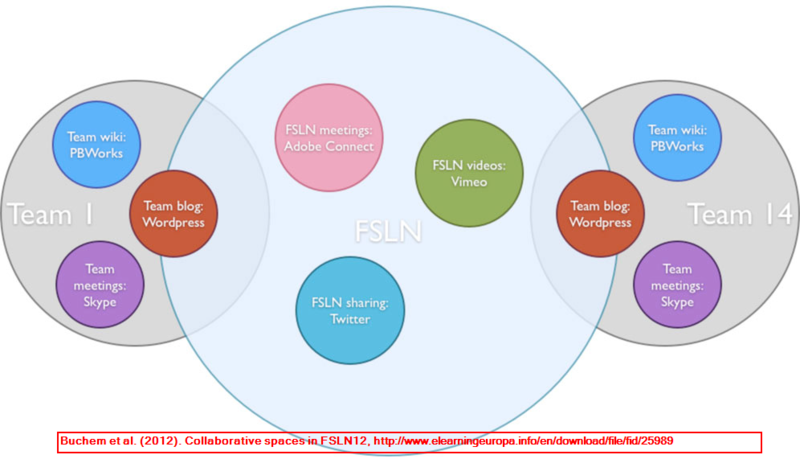Social learning network
<pageby nominor="false" comments="false"/>
Introduction
Social learning network can refer to different phenomena:
- Using large existing social networking platforms in a formal educational context
- Learners using existing social networking platforms for informal collaboration
- Teachers configuring and using their own social networking platforms, e.g. with a platform like Ning.
- Teachers engaging learners from different places in common learning activities using a platform or a series of platforms
For now, this article just brievly describes research covering the 4th version (learners from different places learning together using a variety of social software tools).
Collaborative spaces in the future social learning network project
Future Social Learning Networks (FSLN) is an international collaboration aiming at building learning networks of higher education students and lecturers by means of social and mobile media. The concept was conceived at the University of Paderborn in the Computer Science Education Group (Heinze & Reinhardt, 2011) and was successfully carried over three editions so far. In the third edition (2012), six different universities from Germany and Israel participated. The collaboration aimed at bringing together students from different disciplines to design and develop mobile learning applications in interdisciplinary, virtual teams. (Buchem et al., 2012).
Links
- Wolfgang Reinhard's blog
Social learning network platforms
These include people, courses, and resources (e.g. informal bottom-up organized)
Social e-learning platforms
Bibliography
- Ilona Buchem, Wolfgang Reinhardt, Timo van Treeck, Moshe Leiba, and Alexander Perl. Designing and developing mobile learning applications in international student teams. eLearning Papers, (32):1–5, 2012. [PDF
- Nina Heinze and Wolfgang Reinhardt. Educating Educators with Social Media, volume 1 of Cutting-edge Technologies in Higher Education, chapter Future Social Learning Networks at Universities – an Exploratory Seminar Setting, pages 153–170. Emerald Publishing Group, 2011.
